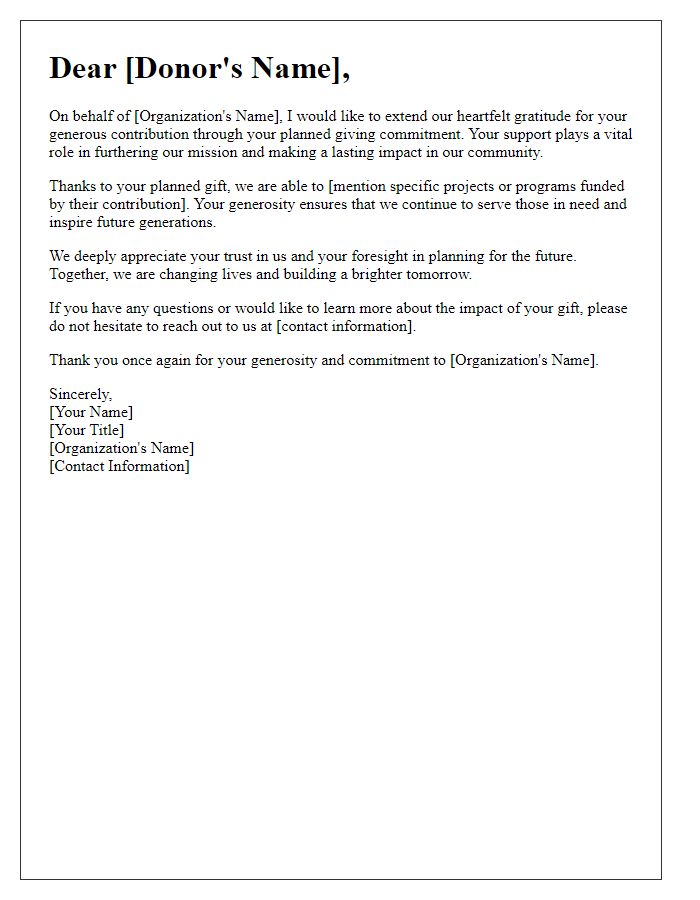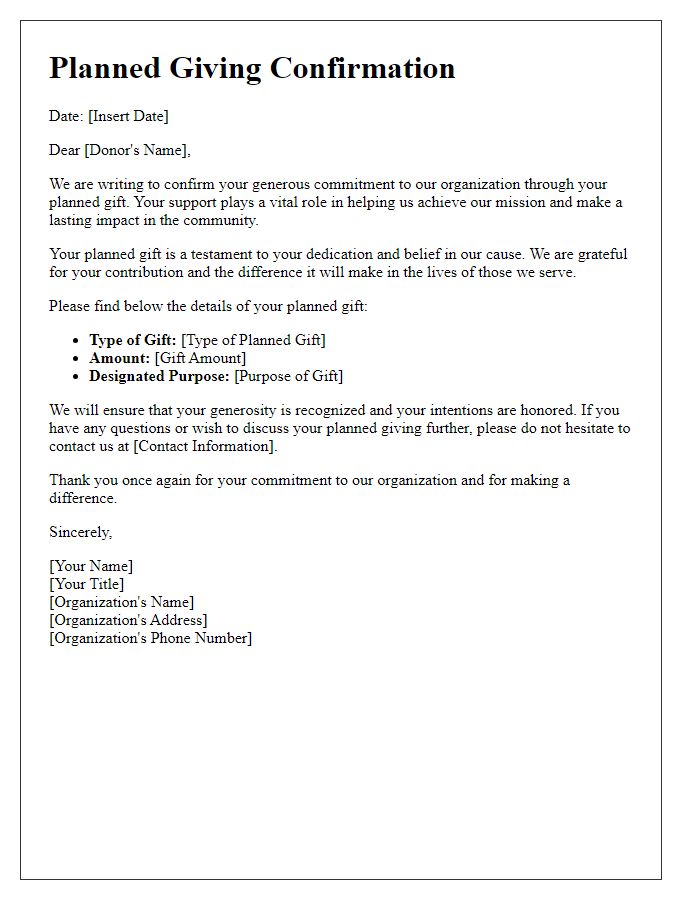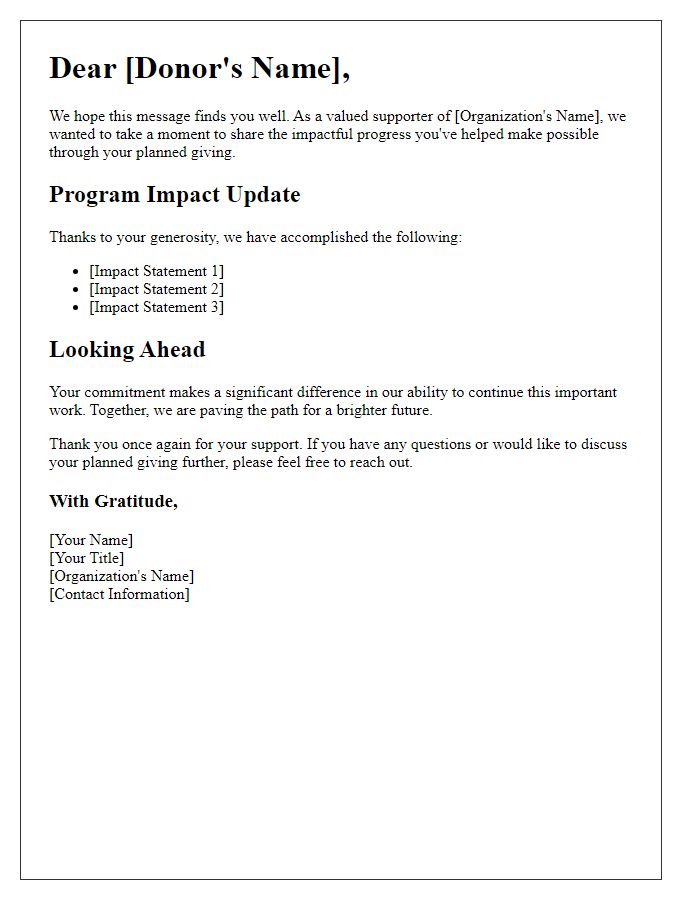In the world of philanthropy, expressing gratitude is just as important as the act of giving itself. A well-crafted acknowledgment letter not only conveys appreciation but also strengthens the bond between your organization and its donors. By recognizing their generous contributions, you foster a sense of belonging and encourage continued support for your mission. Ready to learn how to create a heartfelt letter that resonates with your donors?

Gratitude expression
Planned giving acknowledgments express gratitude towards donors for their generosity and commitment to the mission of the organization. These acknowledgments highlight the impact of contributions on specific programs and initiatives, such as scholarships for underprivileged students or funding for community health projects. By acknowledging the donors' names, such as Mr. John Smith, and specifying the anticipated total contribution, for example, $50,000 over five years, organizations emphasize the profound difference planned gifts make in achieving their goals. This expression of gratitude fosters a deeper connection between the organization and its supporters, encouraging ongoing engagement and support for future endeavors.
Donor recognition
Planned giving plays a crucial role in supporting charitable organizations, allowing donors to contribute significant resources over time. Recognizing donors who commit to planned giving enhances their connection to causes they care about. Acknowledgment can take various forms, such as personalized letters, public displays, or inclusion in annual reports. For example, organizations may highlight donations from estate plans, charitable trusts, or bequests in their communication materials. These acknowledgments can foster a sense of community and encourage others to consider similar contributions for long-term sustainability. Establishing a donor recognition program can also cultivate relationships with patrons invested in the mission of the organization while ensuring funds are appropriately directed toward impactful initiatives.
Impact of the gift
Planned giving plays a crucial role in the sustainability of nonprofit organizations. Contributions such as bequests, charitable remainder trusts, and donor-advised funds provide essential financial support for various initiatives and programs. For instance, a $100,000 endowment can fund scholarships for underprivileged students, impacting their educational journey and future career opportunities. Additionally, dedicated funding for community health programs improves access to vital services for low-income families, leading to better overall public health outcomes. Your legacy gift empowers organizations to plan for the future, ensuring their long-term stability and ability to fulfill their mission effectively.
Tax information inclusion
Planned giving contributions, such as charitable bequests, can provide significant support to nonprofit organizations, ensuring ongoing funding for essential programs and services. These contributions often involve a commitment to donate a specific amount or asset upon the donor's passing, creating a lasting legacy. For tax purposes, it is crucial to understand that these gifts may be deducted from the donor's estate, potentially reducing estate taxes (up to 40% for estates exceeding $12 million in the United States as of 2023). While acknowledging the generosity of planned giving donors, organizations should clearly outline the importance of tax information inclusion in their correspondence to ensure compliance and maximize benefits, fostering transparency and trust in their donor relationships.
Personalization and relationship-building
Planned giving programs play a vital role in ensuring the long-term sustainability of non-profit organizations, such as charities and educational institutions, by encouraging individuals to make philanthropic commitments through bequests or charitable trusts. A personalized acknowledgment letter communicates gratitude and recognition towards donors who make such significant contributions. Including specific details such as the donor's name, the planned gift amount, and the intended use of funds strengthens the connection between the organization and the donor. Furthermore, highlighting the impact of the donor's generosity on programs or initiatives within the organization fosters a deeper relationship, ensuring donors feel valued and appreciated. By conveying heartfelt thanks and offering updates on how the gift will be utilized, organizations can build lasting relationships with their supporters and encourage future giving.
Letter Template For Planned Giving Acknowledgment Samples
Letter template of planned giving appreciation for generous contribution

Letter template of planned giving invitation for donor appreciation event












Comments